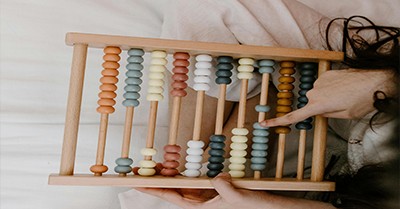Rotation schema refers to a pattern of engagement where spinning, twirling, and circular motions tap into a child's innate fascination with movement and rhythm. It’s a developmental window into how children explore and understand the world around them.
What Is the Rotation Schema?
-
Sensory Stimulation: Spinning activates the vestibular system, which is key for balance and coordination. When children twirl a scarf or watch a spinning wheel, they receive a cascade of sensory feedback that is both stimulating and soothing.
-
Predictable Patterns: Circular movements offer a rhythmic, repetitive experience. The cyclical nature of the motion mirrors other patterns children encounter (like day and night or seasons), providing a comforting sense of structure in an otherwise unpredictable world.
-
Motor Skill Development: Engaging in rotational play helps refine motor coordination. Whether they are purposely twirling a scarf or chasing a spinning toy, children gradually hone the fine and gross motor skills that will serve them in later, more complex tasks.
-
Cognitive Learning Through Play: As children interact with rotating objects, they begin to build an intuitive understanding of cause and effect. They learn, for example, that a faster spin might create a more dramatic visual burst or that stopping a spin leads to a frozen moment—a simple yet powerful lesson in the physics of motion.
How Rotation Schema Manifests in Play
-
Initial Curiosity: A child is drawn in by the movement and bright colors.
-
Engagement with the Object: They pick up a scarf and initiate a spin, watching as it flows in a circular pattern.
-
Sensory & Motor Stimulation: The soft fabric and the sight of the swirling color provide continuous sensory input, while the act of spinning helps improve hand-eye coordination and timing.
-
Repetitive Exploration: The child repeats the motion, experimenting with speed and direction, and perhaps even inviting friends to join in.
-
Learning & Joy: Each spin is both a lesson in physics and a moment of pure delight, reinforcing learning through engaging, playful activity.
Enhancing Rotation Schema Play
-
Integrating Rotational Play in Structured Activities: Educators and parents can use spinning activities to craft lessons around science and art. For example, you might use a spinning top to discuss momentum or a rotating color wheel to introduce primary and secondary colors.
-
Social Interaction and Coordination: Group rotational games—like sharing a spinning wheel or passing around a twirling scarf—can encourage turn-taking, cooperation, and even early problem-solving as children negotiate the rhythm of play.
-
Art and Creativity: Incorporating music or lights with spinning objects can create multisensory experiences that not only entertain but also stimulate creative expression.
What Activities Can Enhance The Rotation Schema?
These activities enrich the rotation schema by not only making spinning fun but by integrating it into broader cognitive, emotional, and social developmental contexts for young children. Each activity is designed to stimulate curiosity, offer sensory delight, and support overall growth in a playful, engaging manner.
